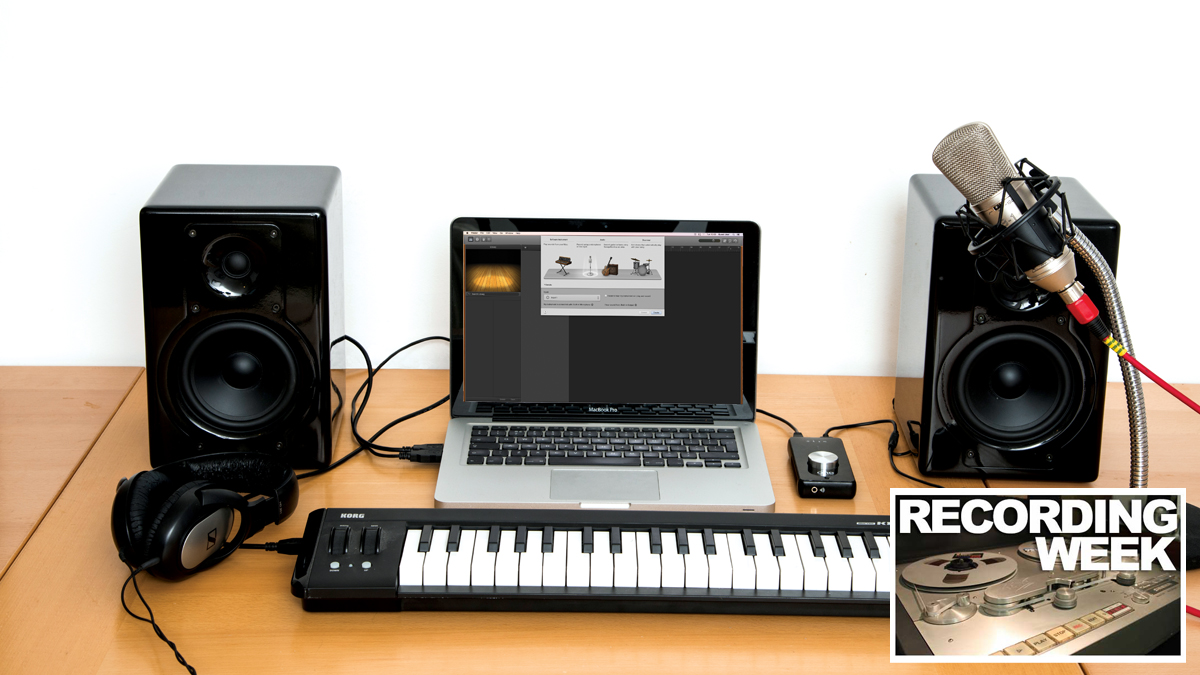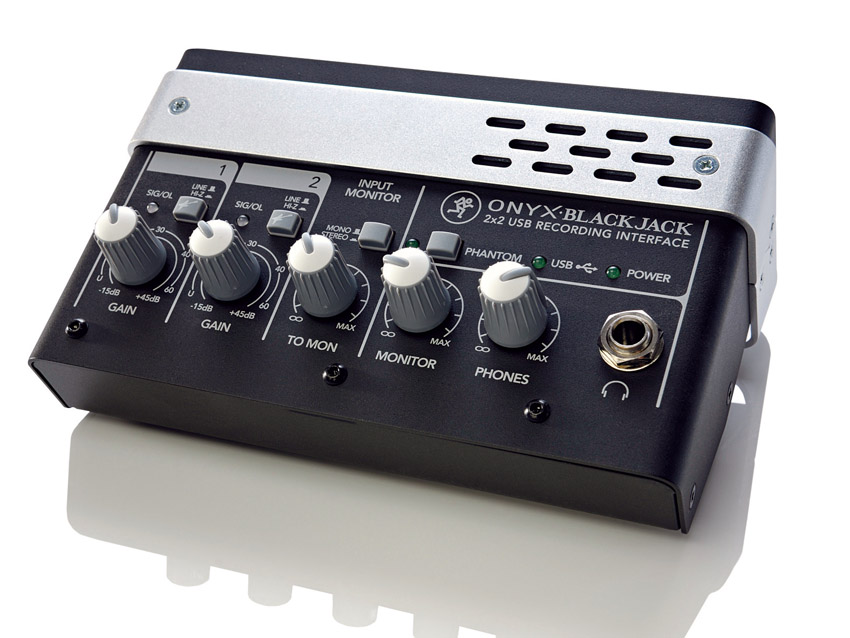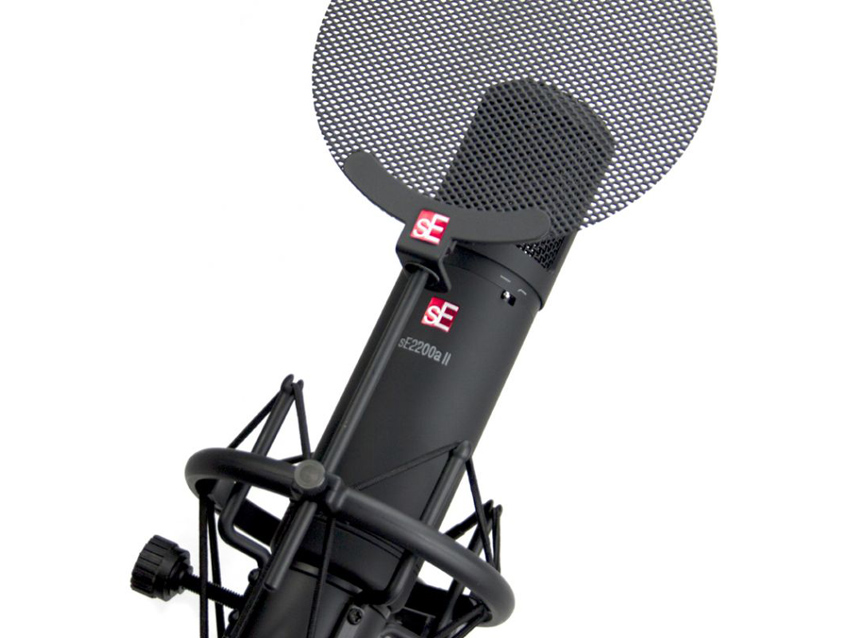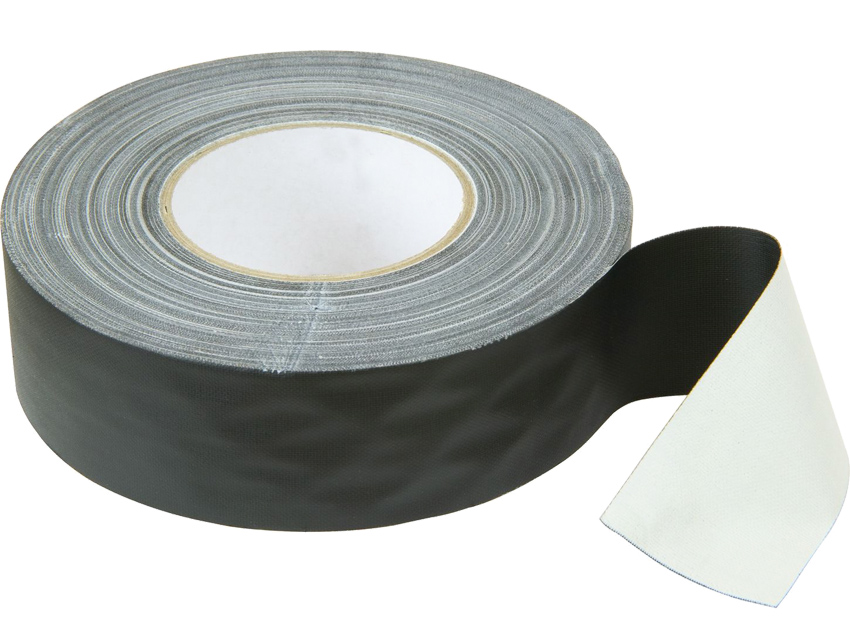The singer-songwriter's bedroom recording toolkit

Get your sounds down
RECORDING WEEK: If you’re spent a while writing a song on your guitar or keyboard, it follows that, sooner or later, you’re going to want to record it.
There are various ways of doing this, but one of the best - and certainly the most flexible - is to use a computer and a piece of software known as a DAW (Digital Audio Workstation).
These are the basics, but if you want to do the job properly, a few other bits of kit will come in very handy indeed. It’s these that we’re focusing on here: from interfaces, mics and headphones to stands, pop shields and rolls of tape.
Recording Week is brought to you in association with Universal Audio. Check out the Recording Week hub page for more tips and tutorials.

Audio interface
All computers include some form of onboard soundcard, and coupled with your DAW, this may be all you need to listen to your computer’s output.
Once you start using a mic, however, you’ll need a mic preamp to amplify its level, possibly phantom power (more on this in a moment) and most likely separate headphone and master outputs.
The simplest way to get all these elements sorted is to buy a dedicated audio interface. This typically connects to your machine via USB or FireWire, and once installed, its inputs and outputs appear within your DAW as physical connections.

Microphones
If you’re recording everything individually and in mono, your best bet will be a large-capsule cardioid condenser mic. You can use this for both delicate and full-on vocals, on intricate sounds like acoustic guitar, and on guitar amps and piano.
If you want to record two things at the same time (guitar and voice, say) or in stereo, you’ll need two mics, and for best results these should be of the same type. Note that a non-valve condenser mic will need phantom power.

Accessories
Analogue tape may be a thing of the past, but sticky tape certainly isn’t.
With leads knocking around and various things to keep in place, you’ll find a roll of gaffer tape helpful, and if you need to label things, masking tape is easy to remove afterwards and can be written on in pen.
Obviously pens and paper will come in handy for quick notes.

Stands
It may be stating the obvious, but your mic will need a decent stand, preferably with a boom for easy positioning.
Large-capsule condenser mics can be heavy, and a decent stand not only protects your investment but helps isolate the mic from ground rumble and shouldn’t have any annoying rattling bits. Of course, if you’re using two mics together, you’ll need two mic stands.
Less critical but also useful are music stands for propping up lyrics, chord charts and so on.

Leads
Connecting your gear up will require a selection of specific leads. Mics and preamps typically use XLR connectors, so you’ll need a female-to-male XLR lead for each mic.
Most headphones use standard quarter-inch jacks that are balanced for stereo operation, so this will be important if you want to extend your headphone feed.
Bear in mind that you’ll always need longer leads than you think, particularly once you tuck them out of sight to avoid tripping over them, so overestimate the mic lead lengths and coil up the excess if you have to.

Tuner
Some of the most annoying problems you can encounter when recording concern pitch. Obviously you’ll need all instruments you use to be in tune as much as possible, and in tune with each other, and your best point of reference is a tuner.
You’ll find that humidity and temperature can cause tuning problems, so it’s often best to retune every few minutes or even between takes. This will also give you enough consistency when compiling the best performance from different takes.
Some DAWs include handy tuner plug-ins, so check in with yours before shelling out for a hardware model.

Monitoring
Assuming you already have your DAW set up with monitors, when it comes to recording, the emphasis shifts to headphones.
In an ideal world these should be of the closed-back type as this prevents your cue headphone mix from bleeding into your microphone. The other thing to bear in mind is that if you’re recording in the same room as your DAW, anyone else you’re working with will need headphones too, so you can all listen with the monitors cut.
If this is the case, and you only have one headphone output on your interface, consider getting a headphone splitter box.

Pop shields and wind shields
Miking things up close can cause various air-related issues. The most common are the plosives in speech and singing, which cause a low-frequency boom.
This is particularly problematic with cardioid condenser mics, so hand-in-hand with that purchase should come a pop shield. These aren’t too expensive and can be bolted onto the mic stand itself - much easier than fiddling around with homemade efforts.
In a similar vein, if you’re recording anything else that creates strong air movement, you may find a more typical foam wind shield helpful.